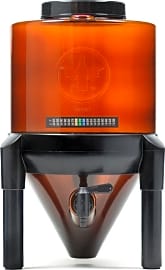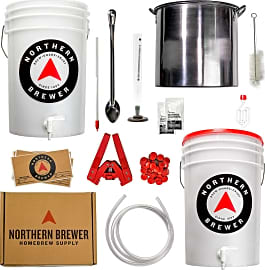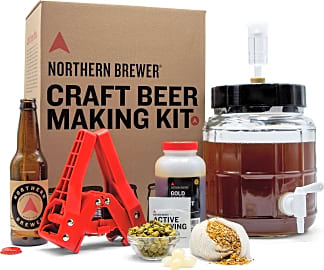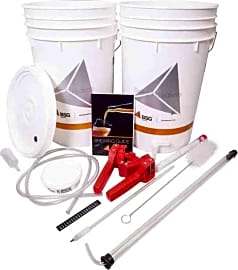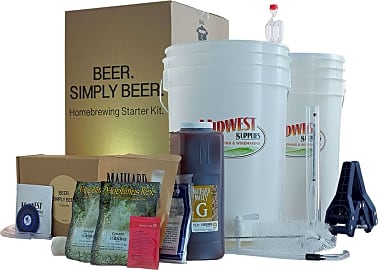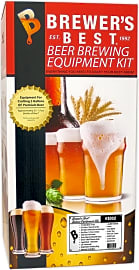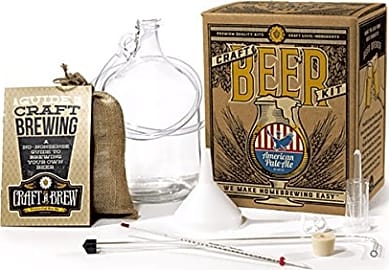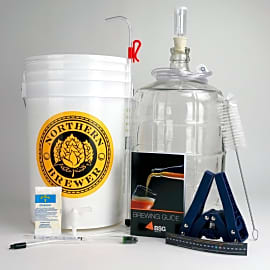The 10 Best Home Brew Kits

This wiki has been updated 41 times since it was first published in September of 2015. Perfect for those looking for a new hobby with an intoxicatingly delicious payoff, one of these home brew kits will let you launch a nanobrewery in your own home. They offer a relatively easy way to round up most of the necessary equipment without having to piece everything together yourself, and they come with a variety of pre-made recipes and also allow you to use your own. When users buy our independently chosen editorial recommendations, we may earn commissions to help fund the Wiki.
Editor's Notes
March 26, 2020:
So you want to brew your own beer. If you have absolutely no idea where to start and aren't familiar with the process, the Mr. Beer Premium is a good place to start. It's designed specifically for beginners, which means its instructions are thorough and easy to follow, and its recipes are relatively forgiving. The folks behind the NorthernBrewer Brew Share Enjoy, NorthernBrewer Siphonless, and NorthernBrewer Deluxe have also done a great job catering to newbies. In fact, those are three of the most comprehensive options, with the high-end Deluxe offering including two glass carboys and a bevy of premium components. The Siphonless, on the other hand, is built for small batches of only 1 gallon, so it's good for those who aren't sure they'll stick with hobby as well as brewers who want to try out very small samples of new recipes before they commit to large ones.
The BrewDemon Signature Pro is another top-of-the-line option from a respected, New Zealand-based supplier, and it's one of the few to come with bottles. If you opt for a kit without any bottles, we'd recommend getting a reusable growler and possibly even a pressurized one to keep your beverages fresh, cold, and carbonated. Depending on which kit you choose, you might also need to pick up a brewing kettle.
And if you already know what you're doing when it comes to brewing, the Home Brew Ohio Maestro and Brewer’s Best Deluxe both consist of high-quality materials although they aren't particularly fancy and don't exactly cater to those who are still learning. If you're looking to save money but still get a two-stage system, the Midwest Supplies Simply Beer is about as affordable as they come, at well under $100.
If you're interested in making wine, brewing kombuca, or fermenting vegetables, there are plenty of great kits available for you there as well. We also want to bring attention to a couple very interesting electronic systems, made by Alchema and PicoBrew, which you can find more information about in the Special Honors section.
Special Honors
PicoBrew Systems Originally designed for professionals who wanted to make small batches of new recipes without making a mess or exerting too much effort, there are now a few different models available with varying sizes and capacities. At one time these were all restricted to products that you had to customize and order directly through the company, but now you're able to prepare your own ingredients and use those. As you might expect, though, automating the process will cost you a pretty penny. picobrew.com
The Alchema This one-of-a-kind electronic device makes it about as easy as possible to ferment foods and beverages. In fact, it works just as well for making wine as it does kim chi. You connect to it using Wi-Fi to control and monitor it, and as well as it works already, the company will be releasing a new and improved 2nd generation model in the near future. alchema.com
Home Brewing and You
The process is extremely similar to making oatmeal, with the end product being distilled into a wort.
So you have decided to become a home brewer. Or perhaps you already are and you would like to step up your skills. Regardless of your level of brewing expertise, anybody with the proper equipment can brew a palatable batch of the suds. Let's walk you through the beer making process.
We want to start with a couple important facts. Making drinkable beer is easy. Brewing good beer is noticeably more difficult. Making great and unique beer requires practice, skill, attention to detail, and quality materials. Alas, while preparing gallons of an average pilsner can save you money versus buying it in the store, the better equipment and ingredients required for decent-to-awesome beer tend to make the cost comparable to what you'd pay at the liquor store. Let's face it, even craft "microbreweries" have a larger and more capable setup than most home brewers.
Most beer making kits, especially for beginners, will include the basic ingredients for brewing: yeast, grains, and hops. The fourth ingredient is water and it is assumed you will supply that yourself. Most brew kits suggest you use distilled water for sanitation purposes.
Brewing beer from a kit starts with one of two materials that are similar but not the same: a malted barley or a malted barley extract. Brewing with a malted barley grain is a bit more difficult than the barley extract and it requires extra steps. The process is extremely similar to making oatmeal, with the end product being distilled into a wort. The wort is then pitched with yeast and left to ferment. You will allow the wort to experience the fermentation process for at least two weeks, storing the substance in a cool, dry, dark place.
Most brew kits will include a fermenter, which may look like a large jug, or can simply be a five gallon bucket you might pick up at a hardware store. The fermenter will not be locked airtight but do not worry; the carbon dioxide needs to escape in this part of the process.
When the beer is ready to be carbonated you will add sugar, syrup, or Carbodrops to airtight bottles. Without this step, you will simply have flat beer. You might ask, why can I not just add sugar to the fermenter and call it a day? Well, the fermenter is not designed to handle the pressure of carbonation. The carbon dioxide gases build and expand, and it can crack the glass. This is why champagne bottles are designed with such thick glass as opposed to the glass of a bottle of wine.
Some kits includes bottles for you; either plastic or glass. If it is not included, at your discretion you can accumulate empty beer bottles. Bottoms up!
Tools in Your Brew Kit
Beer making kits are designed to make the brewing process as simple as possible. The stigma that brewing is overly complicated and reserved only for the professional is changing rapidly. In a matter of thirty days, you can have a homemade brew that can pass for a craft beer on draft!
The largest item in your beer making kit will be your fermenter. As previously mentioned, the fermenter is a large container, in some cases it might simply be a five gallon bucket that you could pick up at a hardware store. Do not pay a premium price for this inexpensive item you can purchase on your own for a much more affordable deal.
Beer making yeast is different from active yeast one might purchase at the store for bread making.
The most important tool in your kit is sanitizer. A perfectly executed brew can be ruined by unwanted bacteria that could have been prevented solely by sanitizing each item you use. Being a brewmaster has been compared to being a janitor; the stress on cleanliness is not unfounded. If sanitizer is not included in your kit, or you have used it all, I recommend you purchase more at your local beer supply store, or if in a pinch, hydrogen peroxide will do the trick.
Hops are an ingredient that cannot be purchased at your local grocery store. Hops are flowers from the hop plant which give beer it's characteristic piney and floral flavor.
Active yeast is a living organism that aids the fermentation process for the beer, by converting carbon dioxide into sugars. Beer making yeast is different from active yeast one might purchase at the store for bread making. Make sure you are purchasing brewer's yeast.
Malted barley is the most important ingredient to determine the type of beer you will brew. A longer roasted malt will appear amber to brown in color with deep rich caramel and chocolate or coffee overtones. A shorter roast will yield to a light and crisp lager.
A Brief History of Home Brewing
Ancient civilizations have brewed beer or a beer-like substance in their homes for over five thousand years. When we speak of modern day home brewing, however, it only recently has risen to popularity as the craft beer revolution has caught on.
During the Prohibition of 1920's in America, all alcohol consumption was made illegal.
During the Prohibition of 1920's in America, all alcohol consumption was made illegal. This prompted creative home brewers to brew or distill liquor in the privacy of their homes. The most common example would be bathtub gin.
It wasn't until 1977 when home brewing became legal in America, thanks to President Jimmy Carter, who signed H. R. 1337. Since the late seventies, home brewing and craft breweries alike began to expand at a rapid rate. In 1980, there were only eight craft breweries in the United States. Today, that number has escalated to over two thousand.
In 2016, American president Barack Obama released his recipe publicly of the first ever home brewed beer in the White House!
Whether you're a president or a nine-to-five salary man, brewing your own beer is accessible to all. It's a satisfying feeling to drink a concoction that you have created; a sense of pride ensues. Good luck out there and happy brewing!


